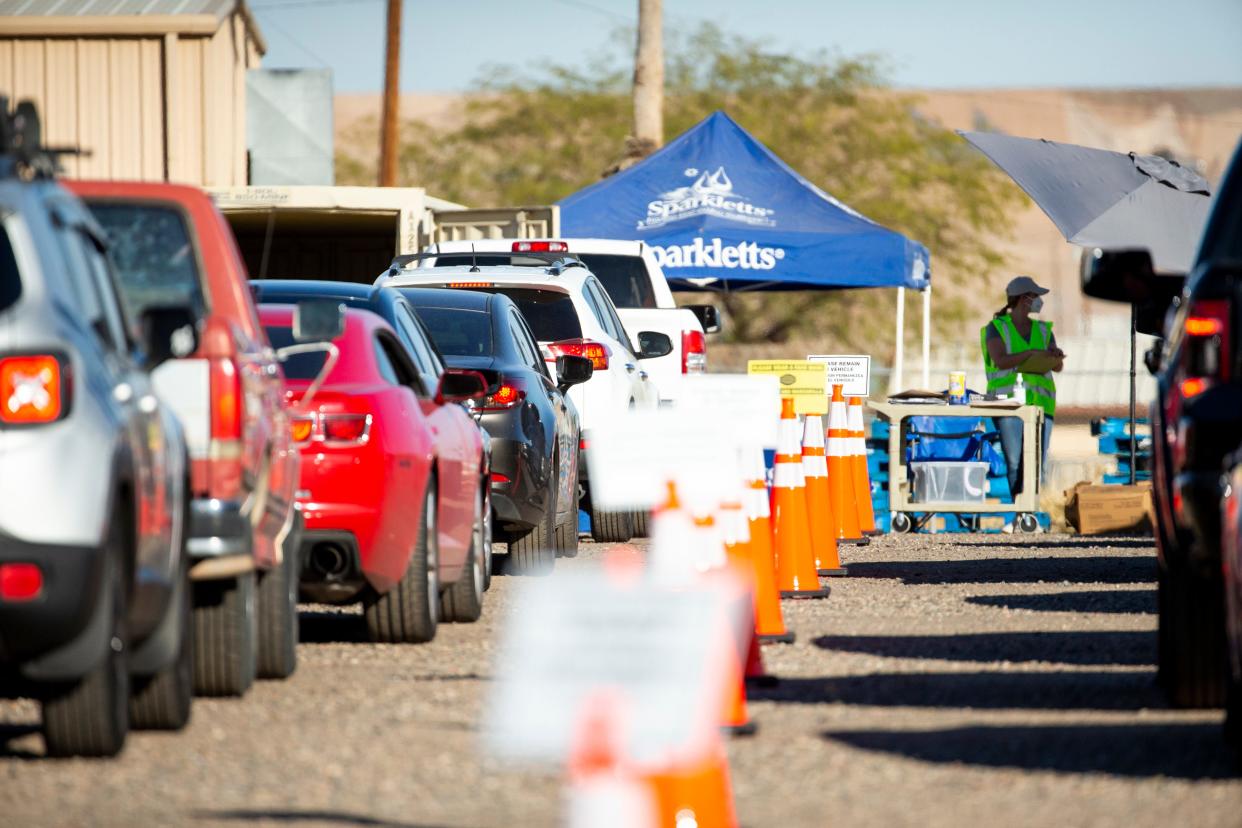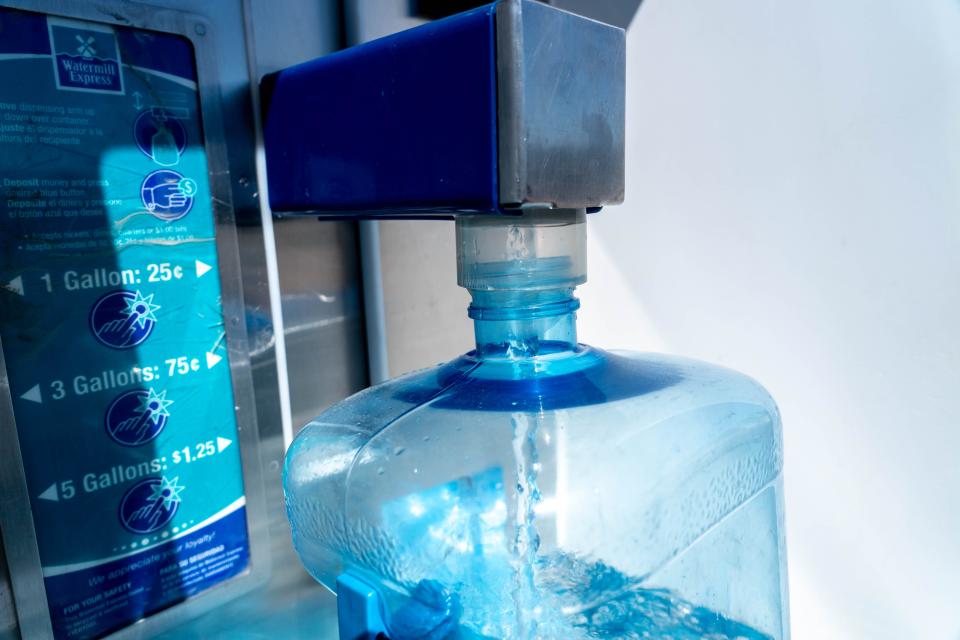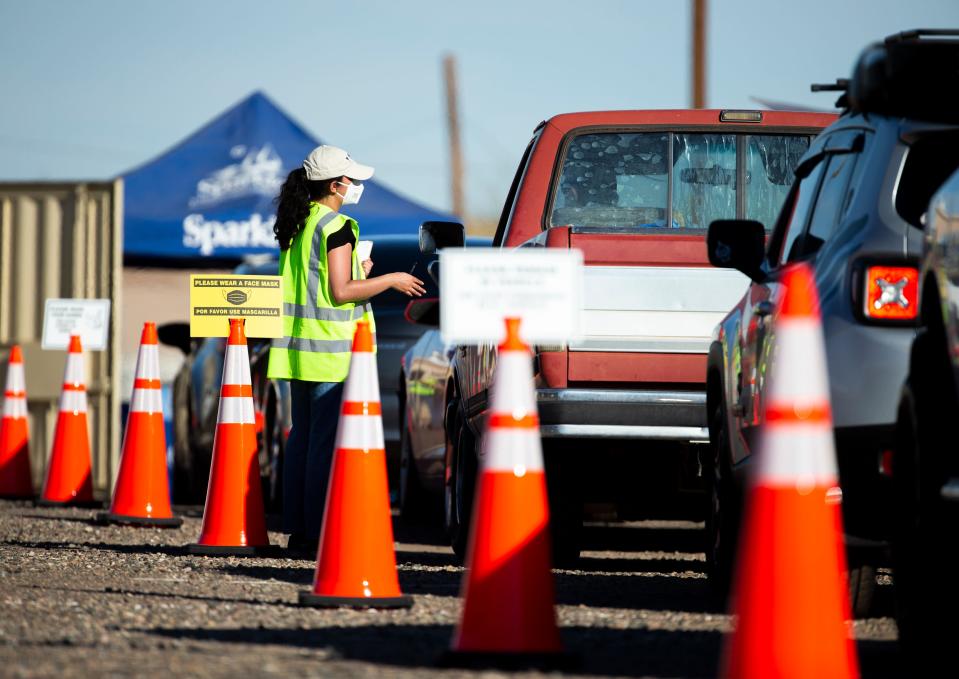Arizona prepares to test hundreds of drinking water systems for toxic 'forever chemicals'

The Arizona Department of Environmental Quality has initiated a statewide effort to sample over 1,200 public water systems across the state for 29 different kinds of a hazardous chemical known as PFAS.
The goal is to produce a detailed map showing the presence of PFAS in drinking water supplies, the first step toward cleaning up contaminated water sources.
PFAS, short for per- and polyfluoroalkyl substances, are a class of manufactured chemicals that have been used since the late 1940s in a wide variety of products and industries, and can now be found globally in water and soil. A growing body of evidence has shown that long-term exposure, even to low traces of these chemicals, can cause severe health issues.
Mapping the presence of these contaminants in Arizona wells is a crucial first step, especially as many communities grow more reliant on groundwater amid cuts from Colorado River water.
The second step would be planning for treatment, but technologies to remove PFAS from drinking water are still new and expensive. More importantly, there are no federal regulations to enforce contaminant limits, so taking action remains voluntary. ADEQ has worked with about 13 water systems in Arizona to warn consumers and limit exposure. Treatment plants that can handle PFAS, like ones in Marana and Tucson, could serve as blueprint for other areas.
The statewide screening effort was largely prompted by a change in federal regulations. Officially, the U.S. Environmental Protection Agency has still not established a maximum contaminant level for PFAS. But with research that links PFAS exposure to infertility, birth defects, kidney malfunction, several types of cancer, and thyroid disease, among others, the federal regulator decided to dramatically tighten its health advisory.
In June, the levels established for PFOS and PFOA, two of the most prominent chemicals, were reduced from 70 parts per trillion to 0.02 and 0.004 parts per trillion, or about 3,500 and 17,000 times lower.
ADEQ has confirmed there are PFAS in at least 57 public water systems in Arizona, and now wants a fuller picture.
“This project is critical for us to understand in Arizona where PFAS is so that we can address it,” Water Quality Division Director Trevor Baggiore said about the sampling effort.
Starting in 2023, most public water systems will have to screen for 29 kinds of PFAS, under the EPA’s fifth Unregulated Contaminant Monitoring Rule. Small systems serving fewer than 3,300 people will not fall under this requirement. The EPA will only draw 800 small “nationally representative” systems for testing.
In Arizona 90% of the state’s 1,502 public water systems fall in the category of “small” systems. Most would be left out of the EPA’s monitoring rule.

ADEQ wants to make sure every single water system in Arizona is tested and will dedicate $3 million from federal Safe Drinking Water Act funds to that purpose. Baggiore believes the agency is “ahead of the curve.”
Those small systems serve over half a million people, and the environmental agency is committed to make sure they are all tested, Baggiore said in a public statement.
The agency will provide results to the operators as soon as they become available and, if they find PFAS above the EPA-advised levels, the state will help them develop a plan to inform the community, limit exposure, and treat water accordingly. About 288 of the 1,502 systems in the state have already been tested and recorded in ADEQ’s PFAS Interactive Data Map. The statewide sampling is expected to conclude by September 2023.
Dangerous but unregulated, PFAS treatment remains voluntary
Because of their water- and stain-repellent properties, as well as heat resistance, PFAS have been used for decades in a wide variety of products, from firefighting foam and roofing materials, to clothing and cosmetics. They are long-lasting and challenging to destroy, hence the nickname “forever chemicals.”
Military bases are among the sites with the highest known concentrations of the chemicals, aside from sites where PFAS are manufactured.
In the U.S. there are over 700 military installations with known or suspected contamination because of the extensive use of PFAS-laced firefighting foam. In Arizona, PFAS have shown up in high levels near Tucson’s Davis-Monthan Air Force Base and Air National Guard base adjoining Tucson International Airport, Glendale’s Luke Air Force Base, Yuma’s Marine Corps Air Station, and the former Williams Air Force Base near Mesa.
ADEQ also has a record of at least 57 public water systems with some level of PFAS. Water systems in Gila, Maricopa, Pima, Pinal, Yavapai and Yuma counties have all shown some combination of PFAS above the new EPA-advised limit.
The agency conducted a first round of testing in 2018, prioritizing wells that were close to potential PFAS contamination sources. Back then, the EPA’s health advisory for PFO and PFOA, two of the most prominent chemicals, was at 70 parts-per-trillion. Few wells tested above that health advisory. Then the federal regulator adjusted that advisory to less than 1 ppt.

Across the country, testing and treating PFAS remains a significant challenge. There are still no laboratory methods to detect the new limits set by the EPA — 0.02 ppt for PFOS, and 0.004 ppt for PFOA. The amount of water systems to sample is massive, and there are nationwide concerns about lab capacity, said Baggiore.
Treatment cost is one of the biggest concerns
Different treatment systems have been established throughout the U.S. to treat PFAS: granulated activated carbon, ion exchange, surface-active foam fractionation, and more recently a system using lye and dimethyl sulfoxide.
Rebecca Aicher, project director with the American Association for the Advancement of Science's Center for Scientific Evidence in Public Issues, said that despite the advances in research and the rise of new promising technologies, there is still no benchmark to treat PFAS. The Center provides policymakers with the best, applicable scientific evidence, and has issued guidance for PFAS testing, treatment, and risk communication.
“These technologies remain costly, energy intensive, and are not yet scalable to address the magnitude of the problem,” Aicher told the Arizona Republic.
Acting on PFAS contamination is still completely voluntary and there is no federal ruling yet.
In 2021, the EPA announced it would release a draft of a maximum contaminant level in drinking water for PFOA and PFOS, by this fall. The draft is still not out and a final ruling, which would allow enforcement through Safe Drinking Water Act standards, might take another year or more.
Baggiore said the state agency is trying to help water systems to the best of its ability. The emergence of a new, pervasive contaminant like PFAS is not something most systems are prepared to manage. Funding sources are mostly limited to money from the Water Infrastructure Finance Authority of Arizona, available through Project Priority List applications, and federal funds from the bipartisan Infrastructure Investment and Jobs Act.
“The (public) water systems did not cause this contamination, yet are potentially bearing the brunt of the cost,” he said. “This isn't something that they were anticipating.”
Cleanup process: The fix for water contamination near Luke Air Force Base is months behind schedule
PFAS groundwater contamination could endanger cities’ 'water savings'
Although PFAS are not manufactured in Arizona, PFAS-laced firefighting foam has been extensively used for decades. At the sites’ hangars and runways, aqueous firefighting foam, or AFFF, used to extinguish fuel fires, has been hosed into nearby washes, or diluted and dumped into the sewer. The contaminants then migrate down to groundwater reservoirs.
In Tucson, there are fears that PFAS contamination near Davis-Monthan Air Force will reach the city’s Central Wellfield, a water reserve that could serve up to 600,000 people.
To contain the plume from moving further into the city’s wellfield, ADEQ, in collaboration with Tucson Water, started running the Central Tucson PFAS Project last December. Through an ion-exchange system, CTPP treats about 200,000 gallons of water a day, sending cleaned water to a nearby wash. To date, it has treated more than 75 million gallons of contaminated groundwater. The expectation is that the pilot project could be replicated in other areas of Arizona.
Tucson Water Director John Kmiec says Tucson’s learning experience could serve others across the state.
“We've been knowledgeable (of PFAS presence) for several years and we've been reacting to it for several years, where a lot of utilities haven't even sampled for it yet or just recently learned that they have found (PFAS) in their in their aquifer system,” Kmiec said.
Tucson Water has been sampling for PFAS since 2009 as part of a voluntary program to track unregulated contaminants, a commitment motivated by Tucson’s history of trichloroethylene water pollution affecting the health of thousands of residents for generations.
PFAS levels were only “curiosities” at that point because not even the 70 ppt advisory of 2016 was in place, Kmiec said. The utility later expanded sampling and identified two PFAS contamination plumes coming from the air bases. The city invested on special equipment allowing it to conduct PFAS testing in its own water quality laboratory.
Tucson Water keeps in close communication with Marana, which is also affected by PFAS contamination and started operating two treatment plants in March 2021, and shares information at a national level with agencies and utilities that are going through similar challenges to improve treatment. Orange County Water district in California is one of them. Tucson Water has also been contacted by officials in Prescott Valley, where PFAS have also been detected, to share their experience, Kmiec said.
To date, Tucson has shut down 25 wells due to PFAS contamination. About 80% of the water supplied to customers comes from Colorado River water recharge in Avra Valley, and 20% from other operating wells. PFAS have not been detected at any of these wells, according to Tucson Water.
PFAS treatment is costly and unplanned for. Both Marana and Tucson are keeping tabs expecting that “responsible parties” reimburse them and take over PFAS remediation. In 2018 they joined a multidistrict litigation against PFAS-manufacturer 3M and are in conversation with the Department of Defense to deal with the contamination plumes coming from the air bases.
Tucson Councilmember Steve Kozachik believes those responsible parties have been “slow-walking” because there is no maximum contaminant level to force them to comply.
“It is no surprise to anybody that wants to think about it for a nanosecond that we have a PFAS contamination problem out right north of the military base of Davis-Monthan,” Kozachik said. Ward 6, which he has represented since 2009, is adjacent to the military base, and the area where numerous wells have been forced to shut down due to a moving PFAS contamination plume.
The Department of Defense has said it needs to conduct remedial investigations and will take about two more years to release final studies. Because EPA guidelines for PFAS are non-enforceable, agencies can’t compel anyone to conduct environmental remediation or clean-ups. There are no estimates on how many years a full-scale remediation project would take.
“My concern is that the plume is moving faster than the process,” said Kozachik. “We cannot use it as a strategy just continuing to shut wells down in response to PFAS.”
Clara Migoya covers environment issues for The Arizona Republic and azcentral. Send tips or questions to clara.migoya@arizonarepublic.com.
Environmental coverage on azcentral.com and in The Arizona Republic is supported by a grant from the Nina Mason Pulliam Charitable Trust. Follow The Republic environmental reporting team at environment.azcentral.com and @azcenvironment on Facebook, Twitter and Instagram.
Support environmental journalism in Arizona. Subscribe to azcentral today.
This article originally appeared on Arizona Republic: ADEQ starts statewide testing for "forever chemicals" in water systems

